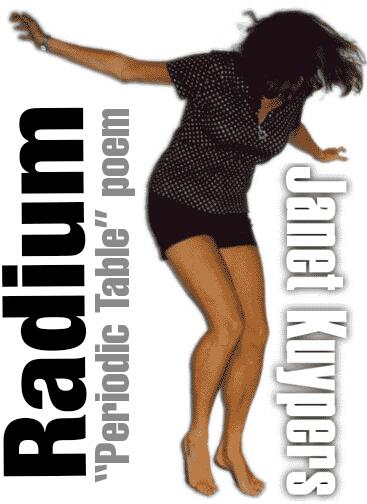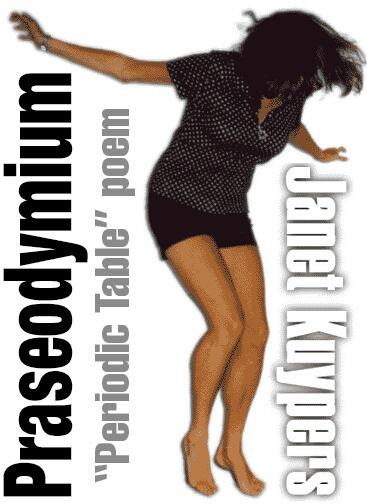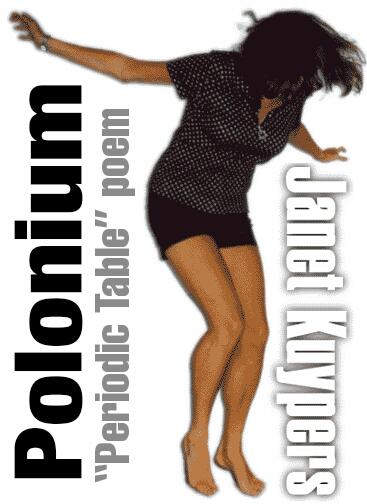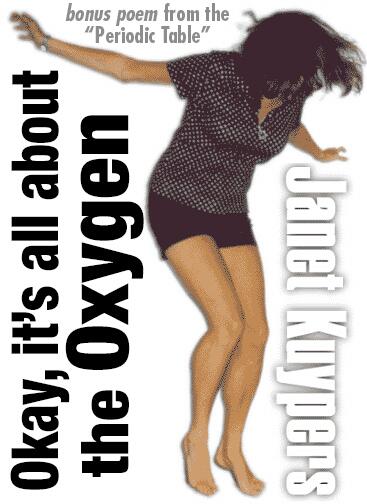Rhodium
Janet Kuypers
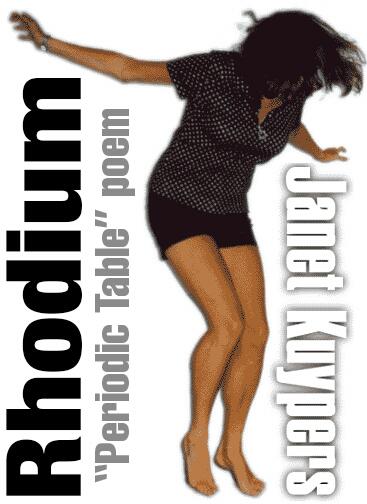
from the “Periodic Table of Poetry” series (#45, Rh)
10/15/13
When you say the word “menthol,”
images probably crop up in your head
of women holding a cigarette stick
like she’s using her smoke
as an orchestra wand,
tracing the line of smoke
like she’s conducting a symphony
with her mint-tasting cancer stick.
But menthol’s also used in lip balms
(I really like that stuff, too,
I like the minty flavor on my lips) —
it’s even used in cough medications.
It can be used in those Icy Hot patches,
menthol’s in decongestants
like Vicks VapoRub, it’s in
aftershaves to relieve razor burn.
Yeah, and speaking of the taste
in cigarettes or lip balm, menthol
is in mouthwashes, toothpastes,
even chewing gum.
So really, now that you know how
widely it’s used now, you can see
how menthol’s demand is now so huge
compared to the natural supply.
So in Japan, one man even won in 2001
the Nobel Prize for Chemistry for
a process to meet the demand
for more menthol worldwide.
This Japanese team used Rhodium
based catalysts for menthol synthesis.
And yeah, Rhodium is used in catalysts
for anything from automobile
catalytic converters, or making
certain silicone rubbers. And sure,
Rhodium is used for jewelry,
coating sterling silver to stop tarnishing
or electroplating white gold and platinum,
making it white and reflective.
I mean, the Guinness Book of World Records
gave Paul McCartney a Rhodium-plated disc
in 1979 for being history’s all-time best-selling
songwriter and recording artist.
Not gold. Not titanium. But Rhodium.
(And because Rhodium’s so expensive,
that World Records award disc given to
Paul McCartney isn’t even solid Rhodium.)
So I guess it’s kind of interesting that
this expensive decorative jewelry addition
is also used to give our chewing gum
that excellent minty flavor. So yeah,
when you’re worrying about how money
can seem tight sometimes,
don’t worry about the jewelry.
Just pop a stick of mint chewing gum
in your mouth, thanks to Rhodium,
and realize that we all probably
don’t have it that bad after all.

